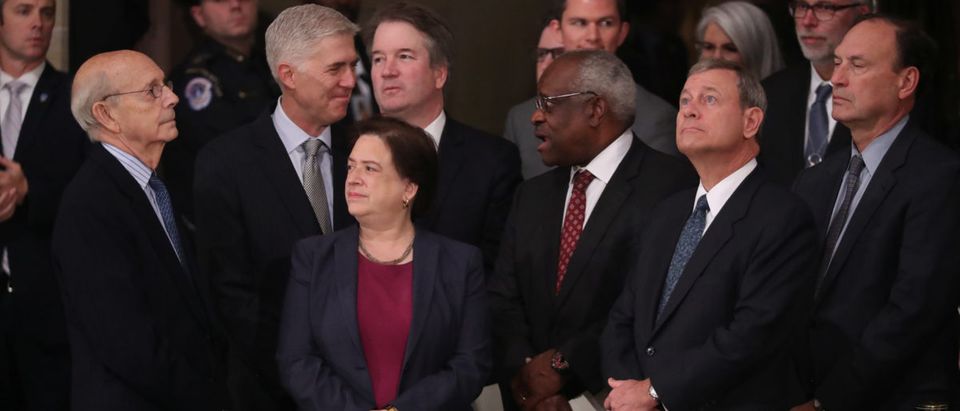Justice Antonin Scalia once quipped, “I’m an originalist and a textualist; [but] I’m not a nut.” During Senate review of Brett Kavanaugh’s Supreme Court nomination, liberal groups tried to raise fears that Kavanaugh was in fact a “nut.”
As Scalia’s comment suggests, he was not a consistent originalist. Early returns suggest that Kavanaugh isn’t one either. Aside from Justice Clarence Thomas, no consistent originalist has graced the court for many years.
This is odd, because originalism — interpreting a legal document according to the understanding of its adopters — is not at all “nutty.” On the contrary, it is the prevailing method for construing almost all other documents, including much of the Constitution. It is the method the founders expected us to use. It was the guiding principle for almost all Supreme Court justices until well into the 20th century.
But for political reasons, the dominant legal culture now insists that we exempt some sections of the Constitution from legal principles applied everywhere else. They urge us to use instead a poorly supported doctrine called “living constitutionalism.”
Suppose we did have an originalist Supreme Court — what would be different? Certainly there would be differences, but they would be less than liberals fear or libertarians hope.
Consider the long-standing debate over the constitutionality of paper money. Advocates of “hard money” claim that the Constitution, as originally understood, bans any currency but metallic coin. Some “living constitution” proponents employ that argument to claim originalism is unrealistic.
Yet both sides are wrong. The founding-era evidence shows clearly that the original Constitution granted the federal government power to issue paper money. An originalist Supreme Court would make no changes in that area.
A longstanding charge against originalist interpretation is that it would reverse Brown v. Board of Education (1954). This was the famous Supreme Court case that relied on the 14th Amendment’s Equal Protection Clause to ban segregation in public schools. Again, however, the opponents of originalism are attacking a straw: Whatever those adopting the 14th amendment thought about segregation itself, by the time the court decided Brown we knew from experience that segregation was inconsistent with the original meaning of “equal protection of the law.”
In the area of federal regulation an originalist Supreme Court would make some changes. It would check federal intrusion into purely local activities. It would void Obamacare, returning insurance law to the states. It would void some federal criminal statutes that duplicate traditional state law.
Yet much the federal regulatory apparatus would survive. The Constitution grants Congress power to regulate “Commerce among the several States,” and as originally understood that power includes authority to ban from interstate commerce products not complying with federal standards.
An originalist Supreme Court would return to the states decisions over contentious social issues, thereby calming fierce national divisions. Probably the biggest changes would be in the bloated federal budget, because many federal expenditures are inconsistent with an honest interpretation of the Constitution.
Under an originalist Supreme Court, Congress no longer would have unlimited spending power. There would be much less pork-barrel spending. The college debt bubble would go away. The states would assume the most popular and useful programs. Congress could cut taxes and balance its budget for a change.
If the court voided a major entitlement program such as Medicare, recipients probably would see little change. Congress would propose a constitutional amendment to preserve it, which the states would ratify quickly. Even without such an amendment, the Supreme Court could protect current recipients through a legal remedy called a “structural injunction.” The judiciary used the same remedy in desegregating public schools.
As for federal environmental programs: Many would survive under Congress’s Commerce Power or by constitutional amendment. States would continue their own environmental programs, expanding them if necessary. States would continue to employ their interstate compact powers to address problems across state boundaries.
If originalist justices ever formed a Supreme Court majority, I suspect that after a few federal laws were voided people would wonder what the fuss was all about. They might think it was nutty not to downsize the federal government long ago.
Which brings us to the real reason advocates of big government fear originalism: At some level, they know that if the Supreme Court erases their favorite programs, few people will want them back.
Robert G. Natelson is senior fellow in Constitutional Jurisprudence at the Independence Institute in Denver. He was a law professor for 25 years and is the author of The Original Constitution: What It Actually Said and Meant.


